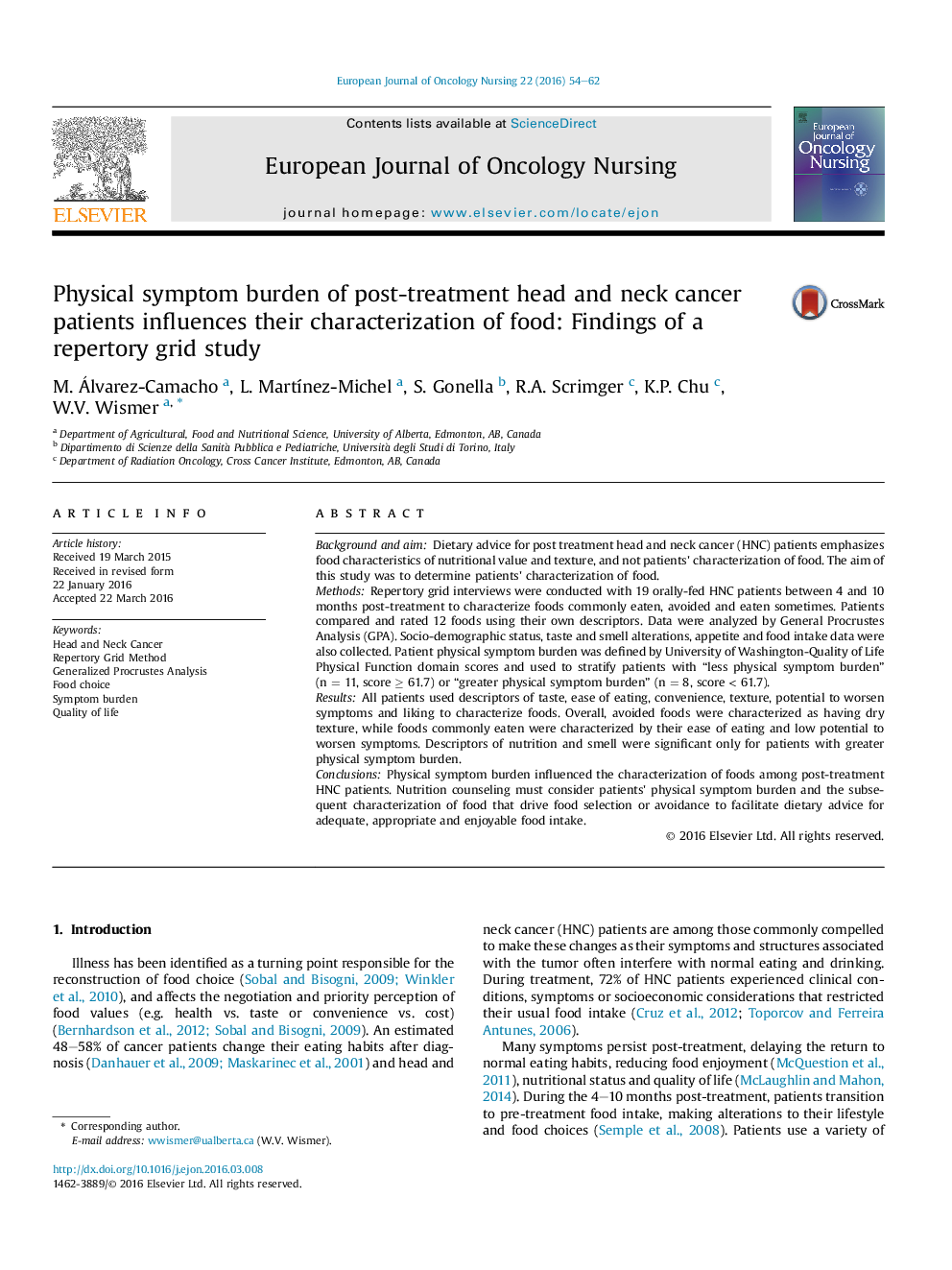| کد مقاله | کد نشریه | سال انتشار | مقاله انگلیسی | نسخه تمام متن |
|---|---|---|---|---|
| 2649392 | 1563811 | 2016 | 9 صفحه PDF | دانلود رایگان |
• Orally-fed post-treatment HNC patients used a repertory grid method to characterize foods commonly eaten or avoided.
• Patient Quality of Life Physical Function domain scores stratified patients as less or greater physical symptom burden.
• Descriptors of nutrition and smell characterized foods only for patients with greater physical symptom burden.
• Nutrition counseling must consider patients' characterization of food to facilitate dietary advice.
Background and aimDietary advice for post treatment head and neck cancer (HNC) patients emphasizes food characteristics of nutritional value and texture, and not patients' characterization of food. The aim of this study was to determine patients' characterization of food.MethodsRepertory grid interviews were conducted with 19 orally-fed HNC patients between 4 and 10 months post-treatment to characterize foods commonly eaten, avoided and eaten sometimes. Patients compared and rated 12 foods using their own descriptors. Data were analyzed by General Procrustes Analysis (GPA). Socio-demographic status, taste and smell alterations, appetite and food intake data were also collected. Patient physical symptom burden was defined by University of Washington-Quality of Life Physical Function domain scores and used to stratify patients with “less physical symptom burden” (n = 11, score ≥ 61.7) or “greater physical symptom burden” (n = 8, score < 61.7).ResultsAll patients used descriptors of taste, ease of eating, convenience, texture, potential to worsen symptoms and liking to characterize foods. Overall, avoided foods were characterized as having dry texture, while foods commonly eaten were characterized by their ease of eating and low potential to worsen symptoms. Descriptors of nutrition and smell were significant only for patients with greater physical symptom burden.ConclusionsPhysical symptom burden influenced the characterization of foods among post-treatment HNC patients. Nutrition counseling must consider patients' physical symptom burden and the subsequent characterization of food that drive food selection or avoidance to facilitate dietary advice for adequate, appropriate and enjoyable food intake.
Journal: European Journal of Oncology Nursing - Volume 22, June 2016, Pages 54–62
